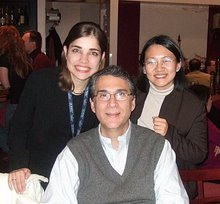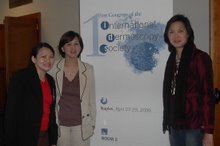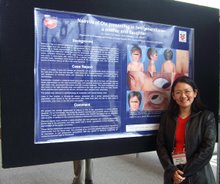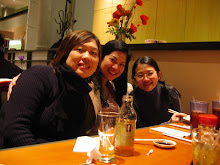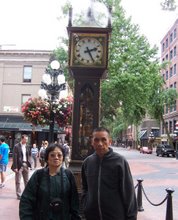Reflectance Confocal Microscopy
 I was very fortunate to have been chosen to present at the Residents & Fellows Symposium at the American Academy of Dermatology Meeting (San Francisco, 2006). This was also my first time to present at the Fellows Symposium.
I was very fortunate to have been chosen to present at the Residents & Fellows Symposium at the American Academy of Dermatology Meeting (San Francisco, 2006). This was also my first time to present at the Fellows Symposium.
I presented on "Reflectance Confocal Microscopy of Pigmented Basal Cell Carcinoma" on behalf of co-investigators Drs. Busam KJ, Benvenuto-Andrade C, Scope A, Gill M, Marghoob AA, González S and Halpern AC, with very good feedback from the audience who were impressed with the quality of the images taken with the confocal microscope. I had worked on the imaging of several pigmented basal cell cancers as part of my fellowship at Memorial Sloan-Kettering Cancer Center, and summarized the findings in this presentation. Confocal microscopy was able to demonstrate tumor aggregations demonstrating palisading cells, cord-like structures and nodules with irregular borders and variable brightness; these represented nests of pigmented basaloid tumor cells on histopathology, and blue-gray ovoid areas on dermoscopy. These tumor nests were associated with bright dendritic structures, identified histologically as either melanocytes or Langerhans cells, together with numerous bright oval to stellate-shaped structures with indistinct borders representing melanophages, and with highly refractile granules of melanin. We have since published on this topic in the Journal of the American Academy of Dermatology (see Publications link).
This is the abstract for this presentation:
BACKGROUND: Reflectance confocal microscopy (RCM) is a high-resolution imaging tool for in vivo noninvasive evaluation of skin lesions.
OBJECTIVE: We sought to describe the relevant RCM features for pigmented basal cell carcinoma (BCC).
METHODS: Pigmented skin lesions with a differential diagnosis of pigmented BCC were imaged using dermoscopy and RCM, followed by excision for histologic analysis.
RESULTS: RCM demonstrated aggregations of tightly packed cells with palisading, forming cordlike structures and nodules with irregular borders and variable brightness; these represented nests of pigmented basaloid tumor cells on histopathology, and blue-gray ovoid areas on dermoscopy. These tumor nests were associated with bright dendritic structures, identified histologically as either melanocytes or Langerhans cells, together with numerous bright oval to stellate-shaped structures with indistinct borders representing melanophages, and with highly refractile granules of melanin.
LIMITATIONS: The pigmented BCCs imaged in this study were predominantly nodular; a different set or additional criteria may be necessary for detection of infiltrative and metatypical BCCs.
CONCLUSION: RCM may permit in vivo diagnosis of pigmented BCC.




